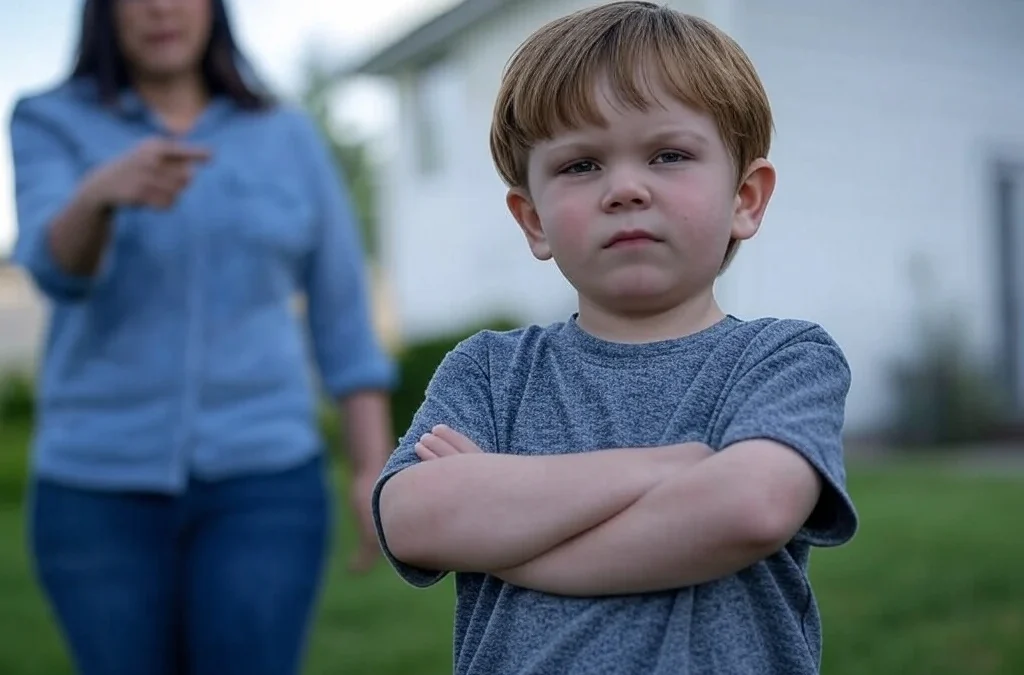Synergy represents one of the most powerful concepts across numerous fields – from business and science to relationships and personal growth. When elements combine to create something more valuable than what they could achieve individually, we witness the remarkable effect of synergy. This phenomenon explains why teams often outperform individuals, why certain business mergers create extraordinary value, and why some combinations in nature result in surprising benefits.
In this article, we’ll explore what synergy truly means, examine various forms it takes, and provide insights into how you can identify and create synergistic relationships in your own endeavors.
What Is Synergy?
Synergy occurs when the interaction of two or more elements produces a combined effect greater than the sum of their separate effects. The word derives from the Greek “synergos,” meaning “working together,” and perfectly captures the essence of this phenomenon.
In mathematical terms, if component A contributes value x and component B contributes value y, a synergistic relationship would yield a result greater than x + y. This added value—this “extra” benefit—is the synergistic effect.
For example, when two companies merge and their combined market value exceeds the sum of their individual values before merging, that additional worth represents synergy. Similarly, when two medications work better together than either would separately, or when team members collectively solve a problem no individual could solve alone, we’re seeing synergy in action.
A key characteristic of synergy is that it creates outcomes that would be impossible through individual efforts alone. The synergistic result often exhibits new properties or capabilities that didn’t exist in the original components.
The Best Examples of Synergy in Real Life
Synergy can be seen in everyday life, from teamwork and business to creative projects and relationships. Below are 30 real-life synergy examples that clearly show how combining strengths leads to better outcomes than working alone. These examples will help you understand what synergy looks like in action.
1. A Music Band Playing in Harmony
In a band, each musician plays a different instrument. The guitarist, drummer, bassist, and singer all have unique roles. Alone, their sound may feel incomplete. But together, they create a complete song that moves people. This is synergy — the final sound is more powerful than any part alone. It’s not just music; it’s a shared outcome that none could produce solo.
2. A Basketball Team Working as One
Basketball shows synergy in motion. One player passes, another sets a screen, a third scores. If they all acted individually, it would be chaos. But when players trust each other, the team flows. They win not just by talent, but by combining effort. Synergy in sports is not about stars — it’s about smart collaboration.
3. Designers and Developers Building a Website
A designer makes a website look good. A developer makes it work. If either works alone, the result may be weak. But when they plan together, the outcome is a website that’s both beautiful and functional. That’s synergy. Each side brings something different, but the final product is better because they worked side by side.
4. A Couple Raising a Child
Parenting is a real-life example of synergy. One parent may be better at calming the child. The other might be great at organizing routines. Together, they create a stable, loving environment that supports the child’s growth. It’s not just two people parenting — it’s the way their strengths blend to raise a person.
5. A Business Merger That Increases Value
When two companies merge, it’s not just about size. It’s about combining strengths. One might have a strong product but weak marketing. The other might be great at distribution. Together, they reach more customers and grow faster. That’s corporate synergy. The combined value becomes more than what each company was worth separately.
6. A Film Crew Creating a Movie
Behind every film, there’s a team — writers, actors, camera operators, editors, and directors. None of them can make a full movie alone. But when they work in sync, the result can be powerful. Everyone brings a piece of the puzzle. And together, they create something that connects with people emotionally. That’s a clear synergy example.
7. A Kitchen Staff in a Restaurant
Think of a busy restaurant kitchen. The head chef gives direction. Line cooks prepare dishes. Waiters bring feedback from customers. Everyone must communicate and stay in rhythm. If one person slows down, it affects everyone. But when each role clicks, service runs smoothly. That’s synergy in action, every night.
8. A Project Team with Cross-Skills
In many workplaces, teams are built with different skills — marketing, finance, tech, operations. Alone, each expert has limits. But when they work together, they make better decisions. A tech idea gets shaped by business sense. A marketing plan gets backed by data. This kind of team synergy leads to smarter results.
9. A Symphony Orchestra Performing Live
An orchestra is one of the clearest symbols of synergy. Dozens of musicians, playing different instruments, follow one conductor. Each part matters. But it’s the combination that creates the full musical experience. No single player can produce that alone. It’s the perfect example of how coordination creates something much greater than parts.
10. A Group Brainstorming Session
Sometimes, one idea leads to another. In a group meeting, one person says something, and another builds on it. Before long, the group has shaped a strong solution that no one could’ve come up with on their own. That’s creative synergy. It’s the value of bouncing ideas, listening, and building together.
11. Emergency Responders Coordinating in Crisis
When firefighters, police, and paramedics respond to an emergency, each has a separate job. But when they coordinate — sharing information, timing their efforts — they save more lives. That’s synergy. No single team could handle everything alone, but together they make fast, effective action possible.
12. Co-Founders Starting a Business Together
Two founders may bring very different strengths. One might be a strong communicator, the other more technical. On their own, they’d struggle to build the full company. But when they combine forces, their business can grow fast and strong. It works because they trust each other and cover each other’s blind spots. That’s real-world synergy.
13. A Comedy Duo on Stage
Good comedy teams often work in pairs. One plays the “straight” role, while the other delivers punchlines. Their timing, chemistry, and contrast make the act work. Alone, each might only get a few laughs. Together, they build a rhythm that keeps the audience laughing. That’s creative synergy built on trust and timing.
14. Engineers Building a Bridge
A bridge doesn’t come from one person’s idea. It needs designers, civil engineers, safety experts, and workers. They all bring different knowledge. Only when they plan and execute together does the bridge get built — safely and efficiently. That’s synergy between minds, machines, and hands.
15. Soldiers Operating as a Unit
In the military, units are trained to rely on each other. Each person knows their role. One may provide cover, another moves ahead. Alone, they are vulnerable. But when acting together, they are far more capable and safe. This kind of synergy is built on discipline, training, and mutual trust.
16. Teachers and Parents Supporting a Child
A student learns better when both teachers and parents are involved. A teacher gives structure. A parent provides support at home. When they talk and share insights, the child’s learning improves. That’s educational synergy. It shows how coordination between different roles helps a single person grow.
17. Software and Hardware Working Together
Software without hardware doesn’t run. Hardware without software is just metal and wires. But when designed to work as one — like in a smartphone or game console — the result is a smooth, powerful user experience. This kind of technical synergy is what drives modern technology forward.
18. Construction Crew Building a House
Building a house takes many trades — electricians, plumbers, roofers, carpenters. Each one handles a different part. But only when they’re scheduled well and communicate does the house come together on time and with quality. That’s synergy in construction: not just people working, but working in sync.
19. A Choir Singing in Harmony
In a choir, singers have different vocal ranges — soprano, alto, tenor, bass. If one sings too loudly or goes off-key, the whole performance suffers. But when every voice blends, the sound is powerful and emotional. That’s musical synergy: voices that become one sound.
20. A Board of Directors Making a Decision
In a boardroom, synergy happens when people with different experience and views come together to decide. One may know finance. Another knows the market. A third understands people. On their own, each perspective is limited. But together, they make better, well-rounded decisions. That’s decision-making synergy.
21. A Pit Crew During a Car Race
In a race, every second counts. A pit crew has just a few moments to refuel the car, change tires, and check systems. Each person has one job, but they all move as one team. Their speed and precision come from practice and trust. That kind of perfect coordination is a clear example of synergy.
22. A Choir Director and Singers Preparing for a Show
A good choir director doesn’t just lead — they help shape the sound. They guide timing, pitch, and emotion. But without the singers, nothing happens. And without guidance, the singers might not reach their full potential. When they work together, the performance reaches a level neither could achieve alone. That’s synergy.
23. A Sales and Customer Support Team Aligning Goals
Sales teams bring in customers. Support teams keep those customers happy. If they don’t communicate, customers can feel lost or misled. But when they share feedback and align their work, the company builds better relationships. Synergy here means better service and stronger loyalty.
24. A Scriptwriter and Director Making a Movie
A scriptwriter can write a great story. A director can bring stories to life on screen. But when they collaborate well, the result is a film that’s rich in both vision and structure. It becomes more powerful than just words or visuals alone. That’s synergy in the creative process.
25. A Surgeon and Surgical Team in the Operating Room
Surgery is not a solo job. The surgeon leads, but they rely on the anesthesiologist, nurses, and assistants. Everyone has to be focused. Timing, communication, and awareness are critical. When they function as one unit, the patient’s chances improve. This is synergy where it truly matters.
26. A Startup Team in Early-Stage Growth
Startups often begin with small teams. One person might handle two or three roles. What makes them succeed isn’t just hard work. It’s how well they support each other and combine their efforts. A developer works with marketing. A founder supports customer service. When they share ideas and learn fast together, synergy fuels their growth.
27. A Magazine Editorial Team Creating an Issue
Writers, editors, photographers, and designers all have different talents. One person can’t produce a full-quality magazine issue alone. But when they brainstorm, plan, and give each other feedback, the final product is strong and polished. That teamwork is a great synergy example in publishing.
28. A Theater Cast Rehearsing a Play
Acting is not just about memorizing lines. It’s about reacting, feeling the moment, and working with others on stage. A strong cast listens to each other and supports the flow of the scene. The audience can feel it. The emotion becomes real. That connection among actors shows how synergy makes a performance come alive.
29. A Logistics Team Managing Supply Chain
Moving goods from point A to B seems simple, but it involves planning, timing, and coordination. Warehouse workers, delivery drivers, dispatchers, and suppliers must all stay in sync. When they do, delays are avoided and customers stay happy. That smooth flow is built on synergy.
30. A Game Development Team Creating a Video Game
Creating a game is complex. It takes coders, artists, storytellers, and testers. If they don’t work closely, the game feels broken or boring. But when they combine their strengths, the game becomes immersive and fun. It’s synergy between creativity, logic, and design.
Types of Synergy
Synergy manifests in various forms across different domains. Understanding these types helps us recognize synergistic potential in diverse situations:
Business Synergy
- Revenue Synergy: Occurs when combined entities generate more revenue together than they would separately—often through cross-selling opportunities or expanded market reach.
- Cost Synergy: Achieved when merged operations reduce expenses through shared resources, eliminated redundancies, or improved efficiency.
- Financial Synergy: Results from better borrowing capacity, improved cash flow management, or tax advantages created by combined operations.
Biological Synergy
- Symbiotic Relationships: Organisms working together for mutual benefit, like bacteria in human intestines aiding digestion while receiving nutrients.
- Ecosystem Interactions: Multiple species creating balanced environments that sustain all members more effectively than isolated populations.
Social Synergy
- Team Synergy: Group dynamics that enable collective intelligence and creativity beyond what individual members could achieve.
- Community Synergy: Shared resources, knowledge, and support networks that create stronger, more resilient communities.
Technological Synergy
- Integration Benefits: Different technologies working together to create more capable systems.
- Platform Ecosystems: Complementary products and services enhancing each other’s value within a unified platform.
Can Synergy Be Negative?
When most people hear the word synergy they think “1 + 1 > 2.”
Yet interactions can also push performance below the simple sum of the parts (“1 + 1 < 2”). Researchers and managers usually call this negative synergy, dis-synergy, or— in biology and pharmacology—antagonism.
Synergy is not automatically positive. Whenever two elements interact, the outcome can be additive (1 + 1 = 2), synergistic ( > 2) or antagonistic ( < 2).
How to Identify Synergistic Opportunities
Recognizing potential synergies before they materialize requires careful observation and analysis. Here are key indicators that synergistic potential exists:
Complementary Strengths
Look for entities with different but compatible capabilities. When one party’s strengths address another’s weaknesses, the partnership often creates synergy.
Shared Goals with Different Approaches
When multiple parties aim for similar objectives but use different methods, combining these approaches can lead to innovative solutions and greater efficiency.
Resource Gaps and Surpluses
Situations where one entity has excess resources that another needs present classic opportunities for synergy.
Value Chain Analysis
Examine how products or services move from concept to customer. Areas where handoffs occur between different entities often contain synergistic potential.
Overlapping Networks
When organizations or individuals connect previously separate networks, new pathways for information, resources, and opportunities emerge.
Common Barriers to Achieving Synergy
Despite its potential benefits, synergy often fails to materialize due to several common obstacles:
Communication Breakdowns
Poor information sharing prevents coordination and limits the integration needed for synergy.
Cultural Mismatches
Different values, work styles, or priorities can create friction that undermines collaborative efforts.
Power Struggles
Competition for control or credit can prevent effective cooperation and resource sharing.
Complexity Overload
As more elements interact, managing those interactions becomes exponentially more difficult, potentially resulting in chaos rather than synergy.
Short-term Thinking
Synergy often requires initial investment before benefits appear. Impatience may lead to premature abandonment of potentially synergistic relationships.
Resistance to Change
Comfort with established ways of working can prevent the adaptation necessary for synergistic collaboration.
Creating Synergy in Practice: A Strategic Approach
Deliberately fostering synergy requires thoughtful planning and management. These strategies can help maximize synergistic potential:
Clear Shared Purpose
Establish common goals that benefit all parties. This alignment creates the foundation for meaningful collaboration.
Define Complementary Roles
Identify the unique contributions each participant brings and organize activities to leverage these strengths.
Create Integration Mechanisms
Develop processes, technologies, and meeting structures that facilitate interaction and information sharing between components.
Build Relationship Bridges
Foster personal connections between key individuals across different teams or organizations. These human links often catalyze broader synergistic effects.
Measure Both Individual and Combined Performance
Track metrics that capture both component contributions and the overall system performance to identify where synergy is occurring or lacking.
Allow for Adaptation
Remain flexible and adjust arrangements as you learn what works. Synergy often emerges through experimentation rather than rigid planning.
Real-World Synergy Success Stories
Learning from actual examples helps illustrate how synergy creates value in practice:
Disney and Pixar
When Disney acquired Pixar in 2006, they combined Disney’s unmatched distribution network and merchandising expertise with Pixar’s revolutionary computer animation and storytelling abilities. The result transformed both companies and revitalized Disney’s animation division.
Apple’s Product Ecosystem
Apple creates powerful synergy between its hardware, software, and services. Each product enhances the value of others in the ecosystem, encouraging customers to adopt multiple Apple devices and services.
Ecological Restoration Projects
When conservationists reintroduced wolves to Yellowstone National Park, it triggered cascading benefits throughout the ecosystem. The wolves controlled elk populations, which allowed vegetation to recover, which stabilized riverbanks and created habitat for beavers, birds, and fish—demonstrating ecosystem synergy. (Note: Many studies support this effect, though some biologists argue the magnitude is overstated.)
Scientific Collaboration
The Human Genome Project brought together researchers from multiple disciplines and organizations worldwide. Their combined efforts mapped human DNA far more quickly and comprehensively than any single group could have accomplished.
Urban Transportation Networks
Cities that integrate multiple transportation modes (walking paths, bike lanes, buses, trains) create synergistic systems where each mode complements the others, making the entire transportation network more effective than any single approach.
Measuring Synergistic Effects
Quantifying synergy helps verify its existence and value. Consider these approaches to measurement:
Comparative Analysis
Compare actual combined performance against the theoretical sum of separate performances to identify the synergistic “premium.”
Value Creation Metrics
Track specific measures related to innovation, efficiency, or market share that indicate whether synergistic benefits are materializing.
Process Improvements
Monitor how work flows between previously separate components to identify where integration creates new efficiencies.
Customer Experience Measures
Gather feedback about how end users perceive the value of combined offerings compared to separate components.
Return on Collaboration Investment
Calculate whether resources devoted to creating synergy (time, money, attention) yield sufficient benefits to justify the investment.
Conclusion
Synergy represents one of the fundamental principles that drive progress across virtually every field of human endeavor. By understanding how to recognize, create, and nurture synergistic relationships, we can unlock potential that remains hidden when we focus solely on individual components.
The power of synergy explains why collaboration often achieves what competition cannot, why diverse teams frequently outperform homogeneous groups, and why some combinations create exponential rather than merely additive benefits. Whether in business partnerships, scientific research, technological systems, or personal relationships, synergy offers a pathway to outcomes that exceed the capabilities of isolated efforts.
As you apply these concepts in your own context, remember that creating synergy requires intention, patience, and flexibility. The most powerful synergistic relationships often develop gradually as components learn to work together effectively. By recognizing the potential for “1+1=3” outcomes in your own endeavors, you can harness one of nature’s most powerful principles to achieve extraordinary results.
Read also: 20 Entropy Examples & Definition
The Most Popular on BitGlint

Top 100 Personal Items List
Everyone uses personal items in their daily lives, often without even thinking about them. From the moment you wake up...

30 Defiance Examples & Meaning
Defiance is something most people experience at some point in life. You feel it when you say no to something that...

Top 30 Desire Examples & Definition
Desire is a powerful force that drives much of human behavior, shaping our goals, dreams, and everyday decisions. It's...

100 Non-Digital Things List
In everyday life, there are still hundreds of objects, tools, and materials that exist completely outside the digital...

30 Examples of Attention & Definition
Have you ever noticed how a catchy tune can grab your attention, even when you're busy doing something else? It's...

60 Cultural Traditions Examples & Definition
Cultural traditions are part of daily life - whether people realize it or not. They shape what we eat, how we...

Top 30 Intimacy Examples & Meaning
Intimacy goes beyond physical touch or romantic moments. It’s about closeness, trust, and connection. In everyday...
Get Inspired with BitGlint
The Latest
40 Emotional Value Examples & Meaning
Why do some messages stick — while others are forgotten? Why do people choose one brand over another, even when the product is the same? The answer often comes down to emotional value. Emotional value is what makes a message feel human. It’s the emotional connection...

30 Teasing Examples & Definition
Teasing is a common part of human interaction. People tease in different ways, for different reasons. Sometimes it is friendly. Sometimes it can hurt feelings. Understanding what teasing means and seeing clear examples helps everyone handle these moments better....
40 Thought Experiments for Curious Minds
Some questions can’t be answered with a simple yes or no. Some problems don’t have a clear solution. That’s where thought experiments come in. They aren’t just old ideas from philosophy books. Thought experiments are tools we still use to think through problems, test...
30 Oligarchy Examples & Definition
Have you ever felt like a small group of people secretly runs everything—whether in politics, business, or even everyday life? You’re not alone. Throughout history, power has often ended up in the hands of a few, shaping governments, economies, and societies in ways...

